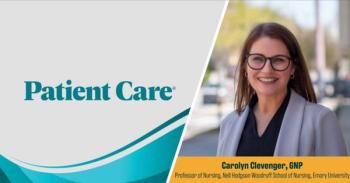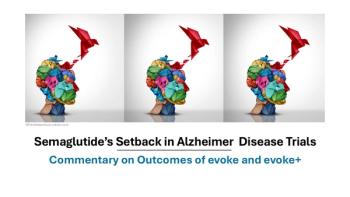
The AIDS Reader
- The AIDS Reader Vol 18 No 4
- Volume 18
- Issue 4
Study Finds Antiretroviral Drugs May Prevent HIV Infection, Name-Based HIV Reporting Doesn't Deter Testing, Tests of New Vaginal Microbicide Gel Show Promise for Women
Study Finds Antiretroviral Drugs May Prevent HIV Infection A study involving monkeys found that the use of 2 antiretroviral drugs, emtricitabine (FTC) and tenofovir, prevented transmission of a primate version of HIV (Berman J. Voice of America. February 5, 2008).
Study Finds Antiretroviral Drugs May Prevent HIV Infection
A study involving monkeys found that the use of 2 antiretroviral drugs, emtricitabine (FTC) and tenofovir, prevented transmission of a primate version of HIV (Berman J. Voice of America. February 5, 2008). Lead researcher Walid Heneine of the CDC and colleagues injected macaques with single daily doses of FTC and then exposed them once a week for 14 weeks to simian HIV (SHIV). Compared with untreated primates, FTC reduced the risk of infection 3.8-fold. The scientists then gave the macaques oral doses of FTC and tenofovir, resulting in a 7.8-fold lowering of SHIV infection risk.
In a third experiment, the monkeys were given daily injections of FTC and higher doses of tenofovir before exposure to SHIV. According to Heneine, this resulted in 100% protection, as did another regimen in which the macaques received the FTC/tenofovir combination 2 to 3 hours before exposure and 24 hours after each weekly exposure. "The findings from this intermittent study suggest that ultimately it is possible to provide a promising new avenue for future research, where it opens up the floor for a lot more research on intermittent dosing," said Heneine.
The study, "Prevention of Rectal SHIV Transmission in Macaques by Daily or Intermittent Prophylaxis With Emtricitabine and Tenofovir," was published in the journal Public Library of Science Medicine (2008;5[2]:e28. doi:10.1371/journal.pmed.0050028). [CDC HIV/Hepatitis/STD/TB Prevention News Update, Monday, March 3, 2008]
Name-Based HIV Reporting Doesn't Deter Testing
New research indicates that a New York state law requiring name-based HIV reporting and partner notification has not led to a decline in the willingness of high-risk persons to be tested or to a drop in testing overall (Rauscher M. Reuters. February 28, 2008). Under the law, which went into effect June 1, 2000, doctors and laboratories are required to report the names of persons with HIV infection, HIV-related illness, or AIDS. The reporting of known partners is also mandated, as is screening for intimate partner violence.
“A primary concern with named HIV reporting is that it might deter HIV testing behavior,” explained study author Dr James M. Tesoriero of the state Department of Health's AIDS Institute. “In addition, concern was expressed that the formal integration of HIV partner notification and intimate partner violence screening into New York's law might affect HIV testing behavior.”
Tesoriero and colleagues examined the effect of the law by performing in-person interviews with 761 persons at high risk for HIV. The researchers found that “high-risk individuals were generally unaware of New York's HIV reporting law and few cited concern about named reporting as a reason for avoiding or delaying testing.”
The results showed that levels of HIV testing in the state were not impacted by the law. "HIV reporting has greatly improved the monitoring of New York's HIV/AIDS epidemic," said Tesoriero, and this study's results show "this benefit has not been offset by decreases in HIV testing, including willingness to test among those at highest risk of acquiring HIV."
The study, “The Effect of Name-Based Reporting and Partner Notification on HIV Testing in New York State,” was published online in the American Journal of Public Health (2008; doi:10.2105/AJPH.2006.092742). [CDC HIV/Hepatitis/STD/TB Prevention News Update, Friday, February 29, 2008]
Tests of New Vaginal Microbicide Gel Show Promise for Women
An experimental vaginal microbicide gel containing the AIDS drug tenofovir has proved safe and acceptable to women in phase 2 trials, researchers told the Microbicides 2008 Conference in New Delhi on Monday (Reuters. February 25, 2008). Funded by the NIH, the study involved 200 sexually active HIV-negative women in the United States and India. The study was designed to evaluate the gel's safety, not its efficacy. "The gel is safe to use and well tolerated by HIV-negative women," said Dr Craig Hoesley of the University of Alabama–Birmingham. "This sets the stage for larger studies to see if tenofovir can prevent HIV infection."
It is still uncertain how long tenofovir can stay active after it is applied as a vaginal microbicide, said lead investigator Sharon Hillier of the University of Pittsburgh School of Medicine. "Currently, there are very encouraging studies suggesting that even when tenofovir is gone from the vagina, the drug itself is there in the vaginal tissue," she said. "The important thing we learned is that covert use, or secret use, is not an important parameter for women, and that in fact we found that 12% of the women who used the gel said it made sex more pleasurable and none of the women said that the gel made sex less pleasurable," said Hillier.
Among participants using the gel, 80% followed the experimental regimen. "We asked women, "How acceptable is this as a prevention option, is it too messy, is it a nuisance, and will you use it?" Hoesley said. "Our study showed they will use it and they're not bothered by the gel."
"It is a critical time for all of us engaged in HIV prevention, and I truly believe we are turning a corner," Hillier said. [CDC HIV/Hepatitis/STD/TB Prevention News Update, Monday, February 25, 2008]
African Trial of HIV Drug Disappoints
Results from a large-scale trial of a microbicide aimed at curbing the spread of AIDS among women showed the seaweed-derived gel "was safe, but not effective against HIV transmission," principal investigator Khatija Ahmed said Monday (Russell S. San Francisco Chronicle. February 19, 2008). The study was carried out among 6200 volunteers in South Africa. It was the first major trial of a microbicide to be completed because earlier or smaller studies of such products had to be halted when evidence showed that not only were they not working but they may have increased the risk of HIV infection.
Half of the South African women received the active ingredient Carraguard, while the control group received an inert material of the same look and texture. Laboratory studies had shown that when inserted vaginally, Carraguard could protect against HIV. But in tests that lasted up to 3 years, researchers found 134 infections in the Carraguard group and 151 in the placebo group––a statistical dead heat.
The investigators will look into possible reasons for the disappointing results, including evidence that study women did not use the gel consistently. Study results showed women used it only 44% of the time they had sex. "That overall number is low, and it could have had an impact," said Barbara Friedland, a researcher at Population Council who coordinated behavioral studies in the trial. The New York--based nonprofit carried out the study with funding from the Bill & Melinda Gates Foundation and the US Agency for International Development.
Because Carraguard proved safe, it could be used in future studies that add antiviral drugs to the gel. "We will be developing the next generation of products using Carraguard as a base," said Robin Maguire, director of product development for the council. [CDC HIV/Hepatitis/STD/TB Prevention News Update, Tuesday, February 19, 2008]
Scientists Find New Receptor for HIV
New research shows that HIV targets a receptor that helps establish viral replication especially in the gut (Altman LK. New York Times. February 11, 2008). For years, scientists have known that HIV quickly invades the abundant lymph nodes and lymph tissue in the intestines. No matter how the virus was acquired, the gut becomes the major site of HIV replication as it depletes the lymph tissue's HIV-fighting CD4 lymphocytes.
The study found that HIV targets a receptor, the molecule integrin α4β7, which directs immune cells to the intestines. A protein on the outer shell of HIV adheres to a molecule in integrin α4β7 that is tied to the way CD4 cells home in on the gut, said the researchers, who were led by Dr Anthony S. Fauci, director of the National Institute of Allergy and Infectious Diseases. HIV's binding to integrin α4β7 triggers another molecule, LFA-1, which plays a key role in HIV's spread from cell to cell.
These actions eventually lead to HIV's destruction of lymph tissue, especially in the gut. "The work we did took nearly 2 years, and there's little doubt that what we have found is a new receptor," said Fauci, adding that "we certainly have to learn a lot more about it." Hopefully, he said, the findings will help scientists study new ways to fight HIV. For example, experimental drugs that block the receptor are being studied for the treatment of autoimmune disorders. New trials could soon test their safety and efficacy against HIV, Fauci said.
The full study, "HIV-1 Envelope Protein Binds to and Signals Through Integrin Alpha-4 Beta-7, the Gut Mucosal Homing Receptor for Peripheral T-Cells," was published online in Nature Immunology (2008; doi:10.1038/ni1566). [CDC HIV/Hepatitis/STD/TB Prevention News Update, Tuesday, February 12, 2008]
Vaccine Research Going Back to Square One
On Tuesday, February 5, 2008, researchers at the 15th Conference on Retroviruses and Opportunistic Infections in Boston presented updates on the quest for an AIDS vaccine.
Further analysis of data from the trial of a Merck AIDS vaccine candidate, which was stopped last fall once it proved ineffective, showed uncircumcised male vaccine recipients had nearly 4 times the HIV infection risk as those who were given placebo, said lead investigator Dr Susan Buchbinder. The vaccine may have activated white blood cells near the surface of the foreskin, a known target of HIV, possibly making uncircumcised volunteers more vulnerable, she said (Russell S. San Francisco Chronicle. February 6, 2008).
However, Buchbinder does not recommend that uncircumcised volunteers who received the vaccine be circumcised as a precaution. While the slightly increased risk of infection among vaccine recipients is continuing, even the numbers among those who are uncircumcised is so small it could be purely the result of chance.
In another presentation, the 3000 attendees were told the NIH has "lost its way" and that current HIV/AIDS vaccine trials are dead ends. "There is no rational basis for believing that any of the products in the pipeline have any reasonable hope of being effective," said Ronald Desrosiers, director of the New England Regional Primate Research Center. Dr Anthony Fauci, head of the National Institutes of Allergy and Infectious Diseases, disagreed with Desrosiers" bleak assessment, although he acknowledged that scientists have much more to learn about the biological steps necessary for the immune system to effectively fight the virus.
Fauci announced a March 25 meeting in Bethesda, Md, where vaccine research leaders will plan a strategy and consider new areas where federal assistance can be channeled. [CDC HIV/Hepatitis/STD/TB Prevention News Update, Wednesday, February 6, 2008]
AIDS Vaccine Not on Horizon, but Drugs Offer Hope
Despite the lack of progress toward an AIDS vaccine, researchers at the 15th Conference on Retroviruses and Opportunistic Infections in Boston nevertheless heard encouraging news about how testing and treatment can help prevent transmission of HIV (Russell S. San Francisco Chronicle. February 7, 2008).
In a 3-year CDC study in Uganda, researchers found antiviral treatment of the infected partner decreases the chance of HIV transmission among serodiscordant heterosexual couples. The HIV-positive husband's use of antiretroviral drugs reduced his wife's HIV infection risk by at least 90%. The same protection was seen for the husband whose HIV-positive wife took the drugs.
The study, whose primary purpose was to discern if treatment led to a change in high-risk behavior, did find a modest increase in unprotected sex. However, the drugs provided significant protection, with just one spouse becoming infected during the study. "Getting an early diagnosis, and getting treatment to drive down viral load, is going to be good for prevention," said Dr Rebecca Bunnell, an investigator for the CDC in Kampala, Uganda.
In another study presented, a door-to-door community HIV testing program showed significant uptake in the remote Bushenyi District in western Uganda. Of its 220,000 population, volunteers were able to get nearly 80% to agree to be tested for HIV. Among them, more than 4% had HIV, including partners in 866 serodiscordant couples.
Studies show an uninfected partner runs a 10% infection risk per year. HIV testing is important for prevention, since research also shows when serodiscordant couples learn a partner is infected, condom use jumps and unprotected sex drops by 80%. [CDC HIV/Hepatitis/STD/TB Prevention News Update, Thursday, February 7, 2008]
Anticipated "Slam Dunk" Treatment Fails
A long-awaited study found that treating genital herpes did not reduce susceptibility to HIV infection, researchers told the 15th Conference on Retroviruses and Opportunistic Infections in Boston on Monday (Russell S. San Francisco Chronicle. February 5, 2008).
Almost 20 years of various studies on herpes have shown that the infection increases the risk of contracting HIV nearly 3-fold. Dr Connie Celum of the University of Washington and colleagues assessed whether using the drug acyclovir to suppress herpes would improve the odds of avoiding HIV infection by at least 50%-similar to the female-to-male prevention benefit now attributed to male circumcision. But when the data were tabulated, they showed those who took acyclovir for herpes acquired HIV at exactly the same rate as those who took placebo.
"Many people thought this was going to be a slam dunk," Celum said of the study, which included gay men in San Francisco, Seattle, New York, and Peru, as well as heterosexual women in Africa. “It was definitely disappointing, but it was also very clear.” One explanation for the results is that suppressing herpes is not enough. While acyclovir is very effective against herpes simplex virus type 2, it does not eradicate it, and many of those taking the drug will continue to have occasional flare-ups.
Confounding scientists is the fact that acyclovir reduced herpes lesions by different percentages in different groups: 32% among African women, 41% among gay men in Peru, and 50% among gay men in the United States. Earlier studies found that acyclovir was capable of an 80% suppression. "This is the real crux of the problem," said Celum.
Despite the study's failure, Celum said her team will continue to work on another approach involving the use of acyclovir in preventing certain HIV infections among couples. That experiment treats herpes in HIV-infected men or women whose sexual partner is HIV-negative and may or may not have herpes. This study is attempting to show that by taking acyclovir, the HIV-positive person will be less infectious, thus less likely to transmit HIV to his or her partner. The study concludes in June, with results likely to be ready in about a year. [CDC HIV/Hepatitis/STD/TB Prevention News Update, Tuesday, February 5, 2008]
Articles in this issue
over 17 years ago
Oral Histoplasmosisover 17 years ago
A "Usual" Case of Syphilisover 17 years ago
Biomedical Methods for HIV Prevention: New SetbacksNewsletter
Enhance your clinical practice with the Patient Care newsletter, offering the latest evidence-based guidelines, diagnostic insights, and treatment strategies for primary care physicians.















































































































































































































































































